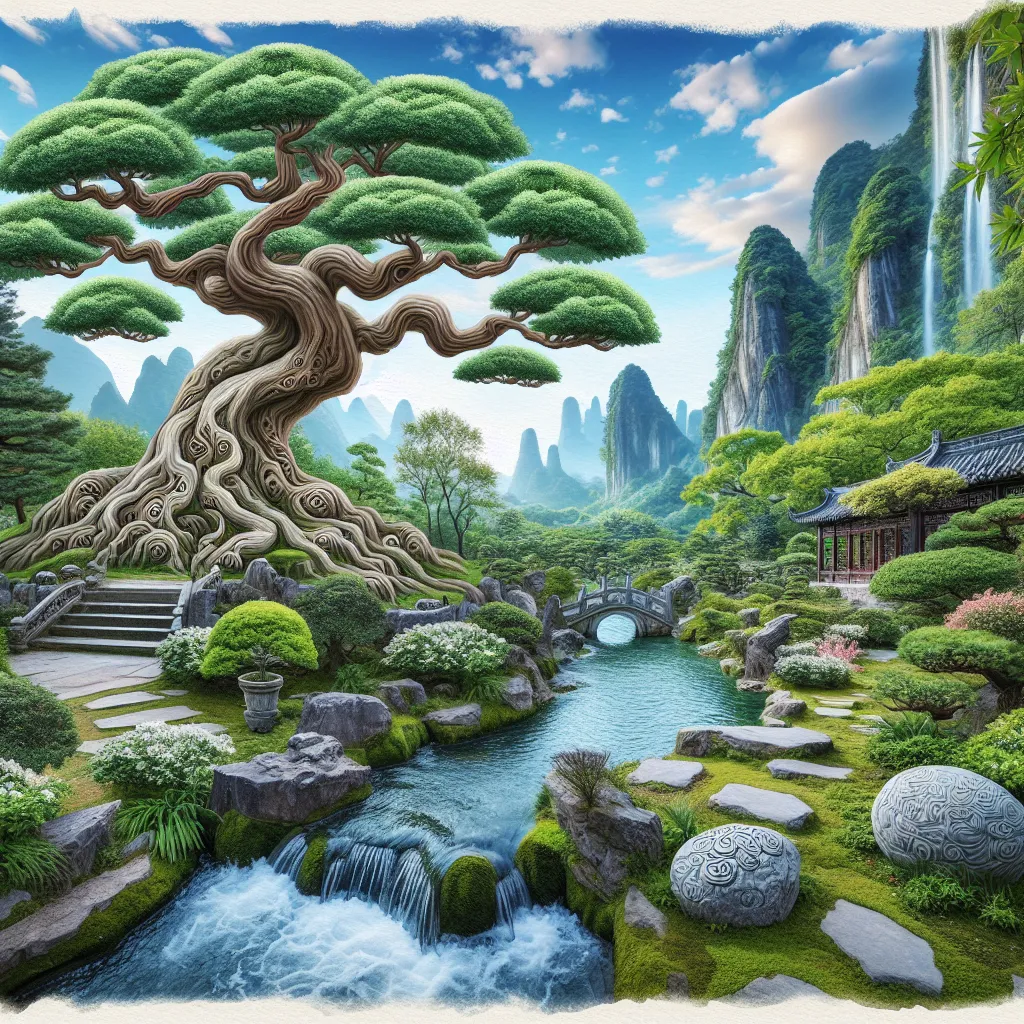
- Published on
- Authors

- Name
- You
The Role of Nature in Taoism: Living in Harmony with the Natural World
Taoism, one of the foundational philosophies of ancient China, weaves a tapestry of wisdom that has captivated and inspired millions for centuries. Central to this philosophy is the profound relationship between humans and the natural world. The essence of Taoism teaches us to live in harmony with nature, offering lessons that are both mystical and intensely practical, especially relevant in our modern era of environmental crises.
The Taoist Philosophy: A Brief Overview
At its core, Taoism (or Daoism) seeks to align human life with the mysterious, ineffable source known as the Tao (or Dao), often translated as "The Way." This concept is not easily defined, but it represents the fundamental nature of the universe, a guiding force that underpins all existence.
Key Principles of Taoism:
- Wu Wei (Non-action or Effortless Action)
- Yin and Yang (The Interplay of Opposites)
- Qi (Vital Energy)
- Ziran (Naturalness or Spontaneity)
Nature as the Ultimate Teacher
The Reflection of Tao in Nature
Nature, in its myriad forms and processes, is regarded in Taoism as the ultimate reflection of the Tao. The flowing river, the blossoming flower, the changing seasons – all these are seen as manifestations of the Tao, embodying its principles in ways words cannot fully capture.
Lessons from the Natural World:
- Adaptability: Streams change course to overcome obstacles, teaching us the value of flexibility.
- Resilience: The cycle of seasons shows the regenerative power of rest and renewal.
- Simplicity: Trees grow without striving, reminding us to simplify our lives.
Scientific Insights into Nature's Wisdom
Modern science, particularly in the fields of ecology and environmental science, echoes many Taoist insights about the natural world. Research demonstrates the complex interdependencies within ecosystems, highlighting the sophisticated balance that Taoism reveres.
For example:
- Symbiosis in ecosystems mirrors the interdependent Yin-Yang relationships.
- Homeostasis in biological systems parallels the Taoist ideal of balance and harmony.
- Chaos Theory in mathematics, with its understanding of complex systems, can be seen as a scientific counterpart to the Taoist view of nature's spontaneity (Ziran).
Practical Ways to Live in Harmony with Nature
Taoist Practices
- Meditation and Qigong: Engaging in these practices helps align personal Qi with the natural Qi.
- Tea Ceremonies: Embracing simplicity and mindfulness through traditional rituals.
- Sacred Groves and Natural Pilgrimages: Respecting and honoring sacred natural sites.
Modern Ecological Practices
| Practice | Description | Taoist Principle |
|---|---|---|
| Permaculture | Designing agricultural systems modeled on natural ecosystems. | Ziran (Naturalness) |
| Sustainable Living | Reducing waste, recycling, and using renewable resources. | Wu Wei (Effortless Action) |
| Nature Conservation | Protecting natural habitats and biodiversity. | Yin-Yang (Balance) |
| Mindful Consumption | Making conscious choices about resource use to minimize environmental impact. | Qi (Vital Energy) |
Conclusion
Living in harmony with nature, as Taoism teaches, is not merely an ancient ideal but a practical necessity in the contemporary world. By integrating the profound wisdom of Taoist philosophy with advanced scientific understandings, we can cultivate a lifestyle that honors the interconnectedness of all life.
In doing so, we not only embrace a path of inner peace and balance but also contribute to the vital preservation of our planet. As we stand at the crossroads of ecological uncertainty, the timeless teachings of Taoism offer a guide toward a more harmonious and sustainable future.
By embracing these lessons and practices, anyone can begin to walk the path of the Tao, creating a world where both humanity and nature thrive in beautiful synergy.
